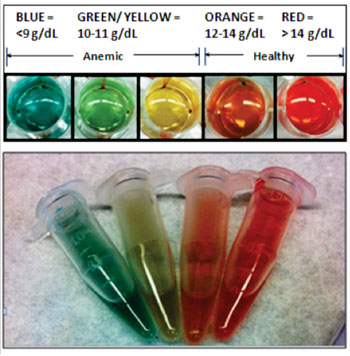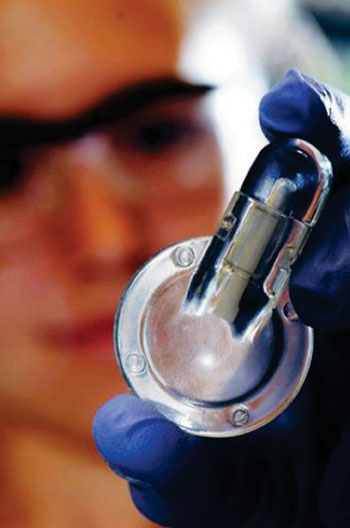New Point of Care Test for Anemia Developed
By LabMedica International staff writers
Posted on 20 May 2015
New diagnostic technology may shift some hemoglobin testing for anemia out of clinical laboratories and into near-patient settings and it may also be possible to use this new diagnostic device for patient self-testing.Posted on 20 May 2015
The new diagnostic test has many advantages over the conventional hematological tests done in clinics, hospital laboratories, and free-standing medical laboratories operating expensive laboratory analyzers as it requires no power source, and the results are available within one minute.
The new medical laboratory test is called AnemoCheck and was developed by scientists and students at Emory University (Atlanta, GA, USA), Children’s Healthcare of Atlanta (GA, USA) and the Georgia Institute of Technology (Atlanta, GA). A startup company called Sanguina will create the market for this new test and will operate out of Atlanta (GA, USA).
Each AnemoCheck point-of-care test kit enables patients to check hemoglobin levels by simply pricking their finger to draw 5 μL of blood into a capillary tube, inserting that tube into a larger tube with a pre-filled chemical solution, mixing, waiting one minute, and assessing the color change of the solution using a reference color scale card included with the kit. The hemoglobin present in the blood acts as a catalyst for a reduction-oxidation reaction and within approximately 45 seconds, a color change occurs. Ideally, the test would be able to subjectively differentiate low, medium and high levels of hemoglobin to diagnose anemia at home.
The user compares the solution in the tube to the color-scale card that comes with the kit. The color ranges from green-blue to red depending on the severity of anemia. Readings can be sent to a Smartphone application (app) for interpretation, storage, and sharing. The test is very convenient as AnemoCheck eliminates the need for repeated trips to clinical laboratories for the chronically ill or for patients who must travel great distances to reach medical facilities.
Erika Tyburski, BS, who developed the AnemoCheck, said, “Results indicate that AnemoCheck can detect even the mildest form of anemia across many different etiologies with sensitivity of more than 90% and specificity of more than 79%. We are currently planning beta testing for home-validation in a sickle cell disease user group that will gauge the ease of use and likelihood of adoption within this group. We do not intend to replace clinical testing, but supplement it to offer piece of mind, and potentially screen for changes in hemoglobin prior to disease-specific crises.”
Related Links:
Emory University
Children’s Healthcare of Atlanta
Georgia Institute of Technology
















